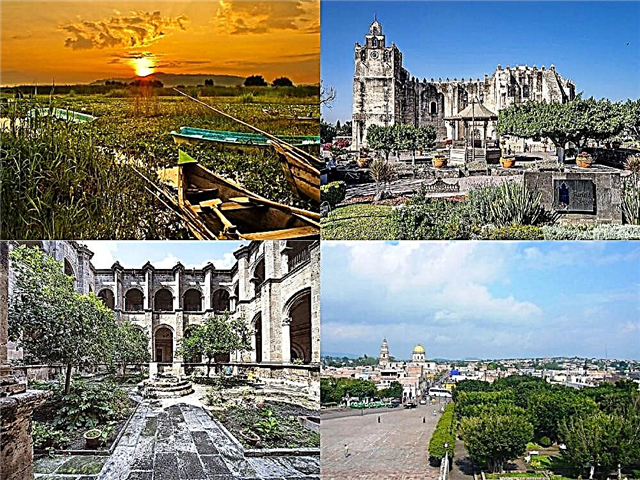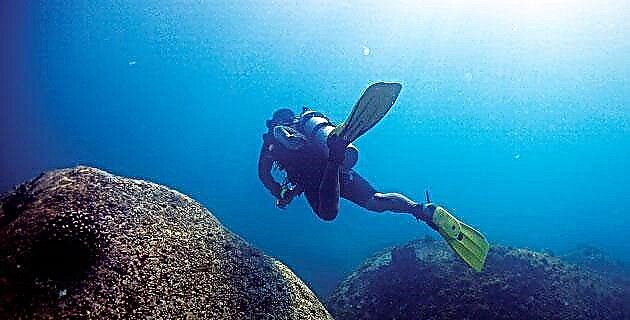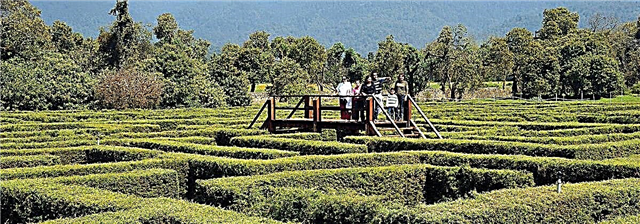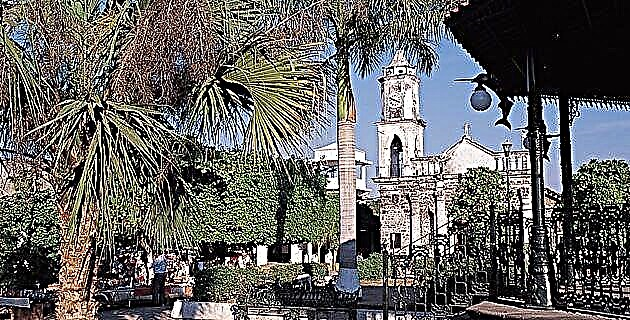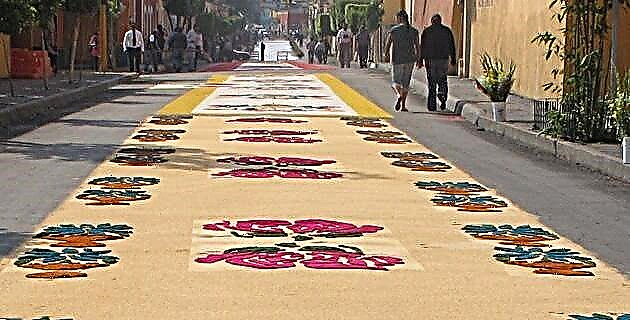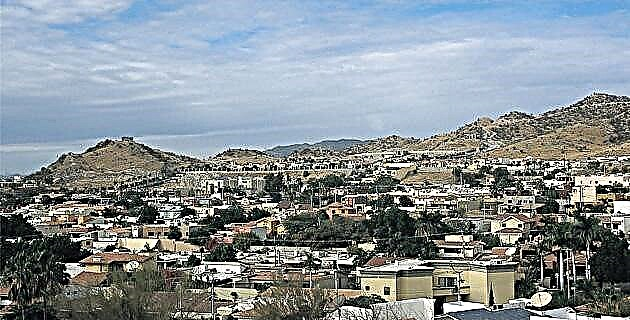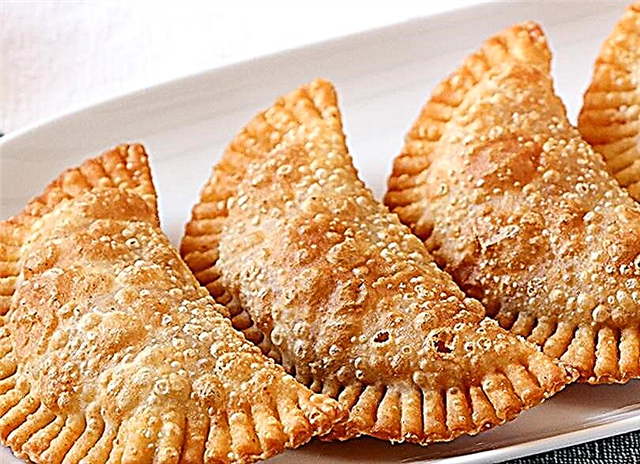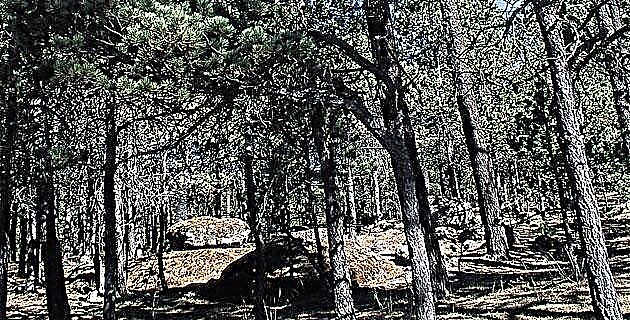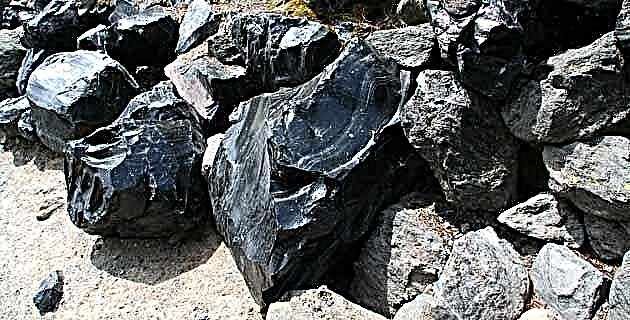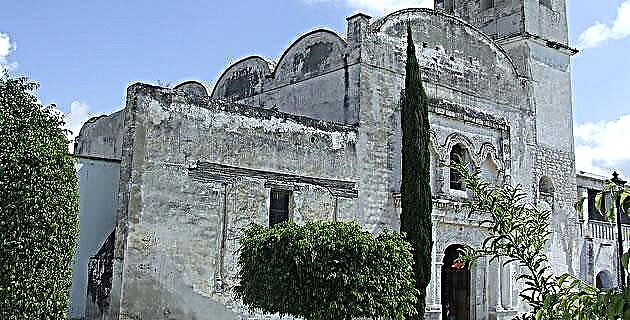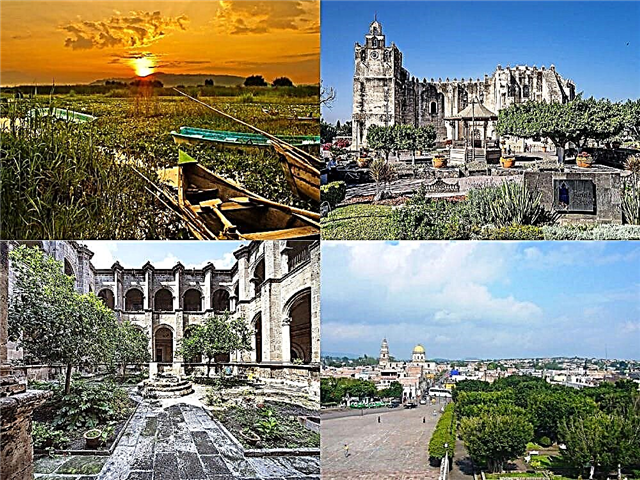In the Guanajuato bajío, with a comfortable climate, Yuriria offers visitors its architectural wealth, particularly that of its temples, the beauty of its lagoon and other charms that we will help you discover with this complete guide to this Magic Town.
1. Where is Yuriria located?
Yuriria is a Guanajuato city, head of the municipality of the same name, which is located on the southern border of the state, bordering Michoacán. The municipality of Yuriria borders the Guanajuato municipalities of Valle de Santiago, Jaral del Progreso, Salvatierra, Santiago Maravatío, Moroleón and Uriangato. Yuriria is 68 km away. from the city of Guanajuato and 147 km. of León. Other cities near the Magic Town are Morelia, which is 64 km away. and Santiago de Querétaro, which is located 111 km. To go to Yuriria from Mexico City you have to travel about 313 km. heading west towards Toluca and then Morelia.
2. How did the town arise?
According to archaeological evidence, the pre-Columbian inhabitants of the territory lived in the mountains that surround the lake-crater, where ruins of pre-Hispanic constructions, both residential and ceremonial, have been found. The official date of foundation of the Hispanic Yuriria, with the name of San Pablo Yuririhapúndaro, was February 12, 1540, through Diego de Chávez y Alvarado, an Augustinian friar of notable importance in the history of the town. Another of the historical episodes of Yuriria is that the San Bernabé mine was found in its vicinity in 1548, being the first mine record made in Guanajuato. In 2012, Yuriria was incorporated into the Pueblos Mágicos system to promote its tourism development.
3. What weather awaits me in Yuriria?
Yuriria is located in the Guanajuato bajío, at 1,748 meters above sea level, enjoying a pleasantly temperate climate, without extreme temperature changes throughout the year. In the summer months, the average temperature is between 21 and 22 ° C, falling to the range of 17 to 18 ° C in autumn, and 15 or 16 ° C in winter; in March the thermometer begins to rise, and in April it is already 21 ° C. The rains are concentrated in the June - September period, when more than three quarters of the 709 mm of water that falls annually on average fall.
4. What are the attractions to know in Yuriria?
Yuriria is an ideal destination for admirers of religious architecture, due to its large number of beautiful temples, some with curious construction characteristics. Among these churches are the Temple and former Augustinian Convent of San Pablo, the Temple of the Precious Blood of Christ, the Sanctuary of the Virgin of Guadalupe, as well as the temples of San Antonio, de la Purísima Concepción, Señor de Esquipulitas and of the hospital. The natural symbol of the Magical Town is the Yuriria Lagoon, with its San Pedro Island and other ecosystems of interest are the Lake-Crater of La Joya and El Coyontle. In the vicinity of Yuriria it is worth visiting the towns of Salvatierra, Valle de Santiago and Uriangato.
5. What is the interest of the Temple and former Augustinian Convent of San Pablo?
The construction of this 16th century convent - fortress that was inaugurated on Corpus Christi day in 1559, was personally supervised by Fray Diego de Chávez y Alvarado, nephew of the famous conqueror Pedro de Alvarado, according to the design of the architect Pedro del Toro. The excellently preserved monastery was fortified by the Augustinians to defend against the continuous incursions of the Chichimecas. It has an elegant Renaissance portal and the temple stands out for its Gothic vaults.
In 1814, the priest José Antonio Torres set fire to the religious complex when he learned that the future emperor of Mexico, Agustín de Iturbide, had taken refuge inside the church. The fire destroyed the valuable red cedar altarpieces that were preserved in the temple. In the spaces of the old convent there is a historical and religious museum that exhibits pre-Columbian and colonial pieces, as well as paintings and sculptures of religious themes from the 17th and 18th centuries.
6. What is the Temple of the Precious Blood of Christ like?
This temple has a sober façade of two bodies, with the portal with a semicircular arch flanked by double columns, and the second body with the choir window, also with a pair of columns on each side, and crowned by the space that protects to the clock. The church has two twin towers - bell tower, with three bodies and topped by small domes. In this church built between 1884 and 1901, a black Christ carved in ebony wood is venerated, brought to Mexico in 1646 from his native Torrijos, Spain, by Fray Alonso de la Fuente. Inside, the images of the Immaculate Conception, the Virgen del Carmen and the Virgen de la Soledad, as well as an oil painting of San Liborio stand out.
7. What is the importance of the Yuriria Lagoon?
Fray Diego de Chávez y Alvarado was a man of great initiative and in the 16th century he had this artificial lagoon built, in order to regulate and take advantage of the waters of the Lerma River, this being the first large-scale hydraulic work in America during the colonial period . Currently, it has a water surface of 80 square kilometers and it is an ecosystem that serves as a temporary refuge for migratory birds and as a habitat for several species of aquatic fauna at risk of extinction. In 2004, the Yuriria Lagoon entered the Ramsar Convention, which includes wetlands of global importance for biodiversity. In the lagoon is Isla San Pedro and on its southern shore is El Coyontle.
8. What's on San Pedro Island?
This island located in the Yuriria Lagoon is no longer such, since a dirt road was built that connects it to the mainland. On the island is the Chapel where Father Nieves is venerated, a particularly important religious site for locals. Fray Elías del Socorro Nieves was a priest born in Yuriria in 1882, who was assassinated in 1928 in the middle of the Cristero War. Likewise, the island is frequented by Yuririan fishermen and visitors who go fishing in the Yuriria Lagoon.
9. What stands out in the Sanctuary of the Virgin of Guadalupe?
This church of particular architecture has its bell tower of three bodies located in the central part; in the first body is the choir, the second is the bell tower and in the third the clock is embedded. Above the body of the watch is a small dome. The construction of the temple in which the neoclassical style predominates, began in 1903 but was paralyzed during the Mexican Revolution, concluding in 1945. The facade is made of quarry and from the front arch there is a triangular finish that is the main access to the church.
10. What is the Temple of San Antonio like?
This small temple located between the Ex-Convent of San Agustín and the temple of the Precious Blood of Christ, is frequently closed, although its facade can be admired from the fence that separates it from the street. The façade is made of stonework and the doorway is a semicircular arch with pilasters on both sides. The church does not have a bell tower and the bells are placed in a belfry. Inside you can see the beautifully ornamented dome with frescoes alluding to San Agustín, San Jerónimo, San Gregorio and San Ambrosio.
11. What can I do at La Joya Crater Lake?
The Lake-Crater La Joya Ecological Park is a protected area of 1,479 hectares, located in the Santiago Valley, in the central part of the state of Guanajuato, touching the town of Yuriria on the southeast side. Yuriria means "Place of the lake of blood" in the Purépecha language, because until a few decades ago, this lake-crater was stained red due to the large amounts of sulfur that entered its waters as a result of volcanic activity and seismic movements. The lake is used for boating, fishing and for cycling in its surroundings. Supposedly it was the scene of human sacrifices during pre-Hispanic times, using the sacrificial stone found next to the old convent.
12. What is interesting about the Temple of the Immaculate Conception?
This church, built between 1710 and 1720 by Fray Alonso de Esqueda, has a two-level façade separated by a cornice and a door with a semicircular arch with Ionic pilasters on the sides. Like the Sanctuary of the Virgin of Guadalupe, it has the characteristic that the bell tower is located in the central plane. On the right side of the façade there is a cubic body, unusual in Christian architecture. Inside, the altarpieces and images of the Immaculate Conception, the Virgin of Guadalupe, San Judas Tadeo, San Agustín, Santa Ana and Jesus Crucified stand out.
13. What is the Temple of the Lord of Esquipulitas like?
This temple is distinguished because its façade is topped by a sculpture of Jesus with outstretched arms, on a triangular pediment. It is located near the 7 Corners, a place in Yuriria where several streets converge. It was built in the 18th century by order of Fray Tomas de Villanueva and it is a building made of pink quarry, with a neoclassical facade. The twin bell towers are topped by pyramidal pylons with crosses. In the church, the Lord of Esquipulitas is venerated, a Christ carved in wood whose color has darkened, being another well-known Mexican “black Christ”.
14. What is El Coyontle?
It is an elevation that is located on the southern shore of the Yuriria Lagoon, forming part of the protected area of the body of water, particularly for its mesquite, a leguminous tree of high hardness wood, highly appreciated for making furniture and instruments and for cooking. the typical Mexican barbecue. El Coyontle, which means "Hill of Coyotes", provided the stones that were used during the colony to build the temple and former Augustinian convent of San Pablo and other buildings of the Pueblo Mágico. The Coyontle is also home to some species of fauna that are at risk of extinction.
15. What's in the Hospital Temple?
This sober temple is located within the Colegio el Buen Consejo, a private school located on Calle Miguel Hidalgo 5. According to the exterior screen, its construction began in 1549 at the initiative of Fray Diego de Chávez y Alvarado. The construction was originally destined to a hospital that cared for the indigenous population, hence its name. The facade of the temple is very austere and has a single bell tower with two levels. Inside, the quarry pulpit and the images of San Luis de Granada, the Immaculate Conception, Christ Crucified, Santa Teresita and the Divine Prisoner stand out.
16. What are the main attractions of Salvatierra?
Only 28 km. to the east of Yuriria is the Guanajuato Magical Town of Salvatierra, a town that is distinguished by the beauty of its civil and religious architecture. Among the civil buildings, the Main Garden, the Municipal Palace, the Portal de la Columna, the Hidalgo Market, the Batanes Bridge, the Perros Fountain and the Municipal Historical Archive and Museum of the City stand out. The main religious places of historical and artistic interest are the parish church of Nuestra Señora de la Luz, the former convent of the Capuchinas and the temple of Señor del Socorro.
17. What stands out in Valle de Santiago?
31 km. To the north of Yuriria is the city of Valle de Santiago, which offers a set of tourist attractions that are worth visiting. The town is framed by the 7 Luminaries, the name given to the extinct volcanoes, La Alberca, Hoya del Rincón de Parangueo, Hoya de Flores, Hoya de Cíntora, Hoya de San Nicolás, Hoya de Solís and Hoya de Álvarez. These 7 volcanoes make up a protected area with places of great beauty, healing waters and cave paintings. In the town, the temples of Santiago Apóstol, La Merced, San José and the Church of the Hospital, as well as the Portal Morelos, stand out for their architectural interest.
18. What do you recommend to see in Uriangato?
Yuriria shares the same metropolitan area with Uriangato. This Guanajuato city has interesting tourist attractions such as the Parish of San Miguel Arcángel, the Main Garden, the Municipal Presidency, the North Portal and the Monument to the Hidalgo Route. On the night of October 6, Saint Michael the Archangel is carried in a procession through the streets of Uriangato, which have been lined with beautiful tapestries made of sawdust dyed in bright colors. Another tourist date in Uriangato is December 25, when a parade of floats takes place.
19. What are the main traditional celebrations of Yuriria?
The most anticipated festive date in Yuriria is January 4, when the Feast of the Precious Blood of Christ takes place in the temple of the same name that houses the famous black Christ who is the object of veneration. People from all over Guanajuato and the rest of Mexico come to these festivals and among its attractions is a parade of floats. On February 12, the anniversary of Yuriria is commemorated, with cultural activities and dances. Another interesting event in the Pueblo Mágico is the Day of the Dead Altars Contest, on November 2.
20. How are the crafts and the local gastronomy?
One of the most popular dishes in Yuriria is the local Caldo Michi, whose basic ingredient is catfish from the lagoon and which contains carrots, squash, chayote, as well as the chilies, dressings and aromatic herbs that are essential in Mexican soups. Other specialties are mole huilota and squirrel with mole. As for handicrafts, the Yurirense craftsmen make shawls and make mats and basketry pieces with the fiber of tule that they collect on the banks of the lagoon. They also make beautiful cross-stitch fabrics and leather objects.
21. Where do you recommend me to stay?
The Tiberíades Hotel located on Calle Santa María 50, is a central hotel, located near the Yuriria Lagoon. Hotel El Rinconcito, on Calle de Salazar 4, is a modest but clean lodging. Yuriria is in the process of developing an offer of tourist services; Meanwhile, many people who are going to visit the Magic Town, prefer to stay in establishments in nearby towns, such as Valle de Santiago, Salvatierra, Salamanca and Uriangato.
22. Where can I go to eat?
In Portal Iturbide N ° 1 is the restaurant El Monasterio, near the former Augustinian convent. It serves delicious Mexican food at excellent prices, without a long wait and the waitresses are very friendly. As with hotels, visitors to Yuriria frequently stop to eat at restaurants in Celaya, Valle de Santiago and other nearby towns, where there is a greater offer to choose from depending on what you want to eat.
We hope that this complete guide to Yuriria will be of much help to you in the Magical Town of Guanajuato. Likewise, if you think that our list was missing somewhere, do not hesitate to write to us and we will gladly consider your recommendation. See you at the next opportunity.